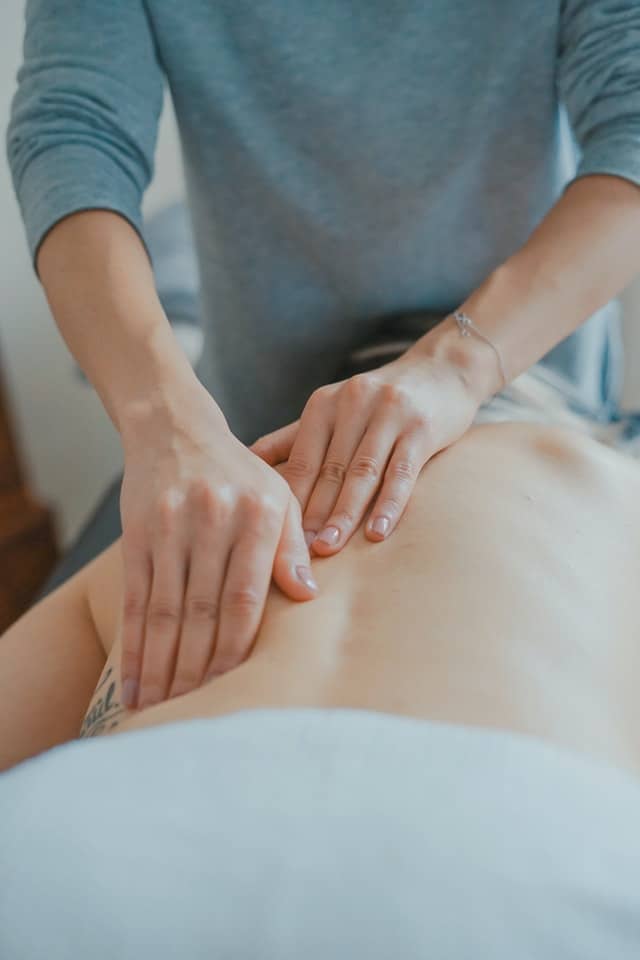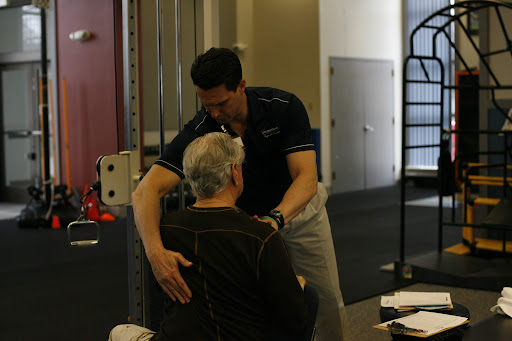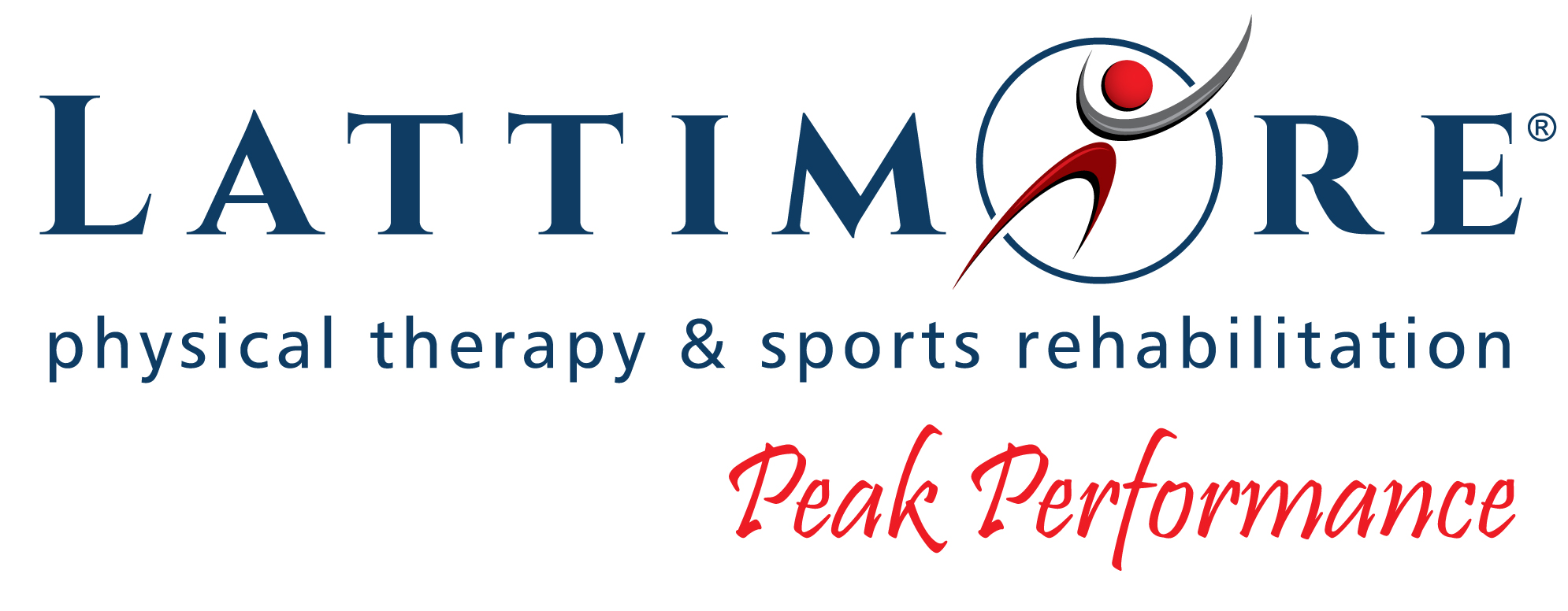The neck and back are particular areas of what is called the spine. Our spine is made of bones called vertebrae that stack on each other with normal curvatures that allow us to have a balanced posture. These bones protect our spinal cord, which carries nerve signals from our brain to all of our limbs, specifically relaying signals associated with sensation and muscle function. The spinal cord runs down within the spinal canal, with nerves exiting each level to reach our body parts. Spacers are called discs between the bones that have a toothpaste consistency like fluid in the center, acting as shock absorbers and motion controllers.
The neck (cervical), mid-back (thoracic), and lower back (lumbar) regions of our spine are susceptible because the nerves are so close by and can be stressed by several different tissues. When pain happens at the spine, the muscle guarding or spasm limits our ease of motion, even for simple tasks like breathing or getting in and out of bed, walking, or turning your head.
Acute injuries can happen — sudden moments where you know something just went wrong. Those tend to be injuries to the ligaments/joints (“sprains” and sacroiliac dysfunction, to the bones (fracture), or the muscles (strains) around the spine. A sudden injury can often culminate in a progressive problem related to chronic stresses, often seen in a disc bulge and herniation type issues.
More chronic type pains often result from micro stresses over time or overuse injuries… more minor overloads that are usually less perceptible or imperceptible that end up causing “wear and tear” type damage and injury. Those are often things like arthritis, degenerative disc disease, stenosis, sciatica, instability/spondylolisthesis, and postural syndrome type conditions.
No matter what the injury, neck and back problems can put a big dent in your comfort levels and your ability to live the life you want. It can mean not being able to work or play sports, not working out, or even being unable to do simple daily activities like walking or climbing stairs, or twisting to reach for something. It can produce a real fear of an inevitable feeling the injury or pain could get worse for some.
If you’re spending more than just a few days or a week with some soreness or limitations that aren’t going away, it makes sense to get your problem addressed. It almost always takes less time to recover, less effort, and fewer costs when you get treatments you need sooner than later!
You can read more about common spine injuries below. Whether this sounds like something you may have going on or your details seem a bit different, the neck and back PT experts at Peak Performance are ready to help you get back to being comfortable, capable, and confident again!

Common Types of Neck and Back Pain
- Disc bulges and disc herniation. This is a common condition, often related to prolonged rounding over related to poor sitting posture and activities in day-to-day work or sports activities. These injuries are often associated with symptoms that may radiate into another body part as pain and tingling/numbness. When nerves are more significantly compressed, muscle function can also be compromised. It is essential to realize that current evidence shows us that MRI alone is not a great indicator of whether your pain is coming from disc abnormalities. Studies show people with no symptoms may have (+) MRI findings, and patients with minor results may present with significant symptoms and exam findings suggesting disc involvement. These conditions are most often treatable with non-operative therapy and very infrequently may require surgery. Often we find underlying limitations in adjacent body parts that are causing overloading to that part of the spine. A thorough biomechanical exam is critical. Usually, hands-on manual therapy, custom exercise, and postural/body mechanics training drills are necessary, along with Class IV lasers in many cases.
- Degenerative disc disease. This term often makes patients think their spine has a “disease” like other medical conditions they are familiar with. This refers to it being a more long-standing or chronic condition that took some time to develop and was physically present long before symptoms likely began. Biomechanical evaluation will help identify other body parts “up and down the chain” contributing to the overload. A focus on “spine exercises” alone may provide temporary relief but often lead to recurrence due to missing the ultimate cause of the stress.
- Sacroiliac joint dysfunction. This is often termed “SIJ dysfunction” for short. This refers to where the pelvic bones connect to the triangle-shaped sacrum bone at the base of the spine. You can feel a slight ridge (or see a “dimple” often) on each side of the lowermost part of the back just above the buttocks. Very little motion happens here, but a misstep, sudden move, or jarring force can cause this joint to become painful and inflamed. Manual therapy techniques and exercises specific to dysfunction are often crucial in resolving SIJ pain.
- Arthritis. The spine joints can develop wear and tear changes over time, often termed degenerative joint disease. This usually is related to reduced disc space causing the joints to become compressed, and bone stresses may result in spurring (osteophytes) forming that can limit motion and be painful. A hallmark of neck and back arthritis is stiffness and loss of range of motion. Physical therapy is a proven treatment that can reduce and even resolve pain while helping to recover lost mobility. It is vital to address spinal arthritis before it progresses to become severe. Surgery is sometimes necessary to “clean out” areas of the bones/joints, blocking adequate room for the existing nerves.
- Sprain or joint dysfunction. These conditions often happen more suddenly with an unexpected jarring or wrong move, causing sharp pain and the feeling of being “locked up” and unable to move freely. While current evidence tells us the old concept of spine bones being “slipped out of place” or “subluxated” is not an accurate way of describing or thinking of these injuries, there is what we call a movement dysfunction present where normal joint mobility has been compromised, likely related to painful spasm/guarding that compromises normal pain-free movement.
Hands-on manual therapy techniques are very effective at treating these common dysfunctions. The spine care expert therapists at Peak Performance are trained in numerous forms of manual therapy to address these. One of these is the osteopathic muscle energy technique, where a “popping the joint’ (Grade V mobilization) may not be necessary. Your therapist will never perform a thrust technique without first educating and discussing it with you.
Stenosis. This refers to the closing or narrowing of the space for the nerves in the spine. That can be in the central canal, where the spinal cord travels down from the head toward the sacrum or where individual nerves exit between the vertebrae. It is more common in the lower back than the neck. It usually causes local and radiating symptoms with walking or prolonged standing and is relieved by sitting/bending. While the actual physical stenosis is not changed by therapy, this condition can be dramatically improved with hands-on manual therapy techniques, specific mobility drills, and addressing adjacent stiff body segments and causing stresses to build in that spine area.
How We Can Care for Your Spine
Our Peak Performance spine care program starts with understanding the anatomy and biomechanics of the neck, mid-back, and lower back regions. It also includes assessing your spine’s “next-door neighbors” above and below.
Our functional biomechanics training from the Gray Institute allows us to test for critical contributing factors that may have caused your spine to become overstressed by compensating for shortcomings elsewhere. Too often, patients and even health care professionals have a “you’re a neck(or back)” sort of mindset. That results in focusing too exclusively on the foot-ankle or ignoring or mistaking which other areas need help. The biomechanics training we utilize allows us to identify and treat the factors that may have initiated stress onto the injured neck or back tissue.
Being a spine care expert therapist requires hands-on manual therapy skills, the use of customized exercise to address mobility and strength/endurance issues, identifying optimal body mechanics for optimizing the performance of your favorite activities, and knowing when other treatments such as therapeutic taping or Class IV laser or traction may be indicated.

Neck Pain Physical Therapy
Therapy to the neck requires particular sensitivity and appreciation for the stress that neck pain causes and the difficulty patients often have in trusting someone to use hands-on techniques to free up restricted tissues. Our patients find the gentle techniques we use to be comfortable and practical. Your therapist will never do any quick/forceful methods to your neck without discussion and your approval first.
Often we find restrictions in the mid-back (thoracic) spine and nearby shoulders/shoulder blades can be contributing to why a neck injury or pain develops. Remember, it’s always vital to avoid the temptation to reduce your pain and then go back to activities before having helped those related areas to be more prepared to function normally. Our goal is to prevent the recurrence of your neck pain so you can put this in your past.
Back Pain Physical Therapy
Low back pain is one of the most common orthopedic conditions. Studies show that up to 80% of people will experience a debilitating episode of back pain in their life. Many people are concerned that surgery may be necessary to correct the problem, but this rarely happens. Most low back pain and sciatica-type conditions can be successfully treated with non-operative conservative care like physical therapy.
Many of the conditions above commonly involve issues at adjacent critical body segments that patients were unaware of, especially the mid-back(thoracic), hips, and foot-ankle. Our bodies function as connected segments. Limitations in any of these areas will result in the lower back area having increased stress regularly, contributing to gradual tissue overload and breakdown. Too often, the internet or a friend or personal trainer becomes the source of generic “back exercises” for people in pain.
While you may often hit the lottery and have things work out, this is a mistake. The same is valid for one-size-fits-all “back pain program” lists sometimes provided by health care providers. Exercises should be specific to exam findings. We frequently find that it is imperative to continually move the spine in a particular direction early on while avoiding the stressing order. Generic exercises may include a beneficial movement but simultaneously make you go in directions that overload injured tissues.
Receive Neck and Back Pain Physical Therapy at Peak Performance
At Peak Performance, our neck and back expert therapists are driven by a passion for helping people resolve their pain and restore their function. Getting you back to what you love doing is what motivates us. That’s fueled by our extensive training in Applied Functional Science © that helps us identify shortcomings in other areas (often missed or neglected by traditional therapy) that may have contributed to your problem or could cause a slow recovery. We’d be honored to help you get back to being you again! Call us today to get a spine evaluation and begin your road to recovery.










